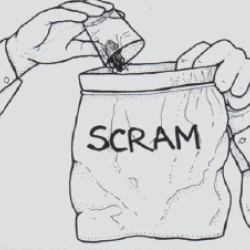Source Institutions
Source Institutions
Add to list Go to activity
Activity link broken? See if it's at the internet archive

In this outdoor activity and animal-role-play game, learners discover and uncover the hidden world of "cryptozoa"—organisms such as spiders, salamanders and slugs that live under objects, like rocks and fallen tree trunks, or in concealed places. When uncovered, some cryptozoa scurry for cover ("scram"), while others remain motionless ("freeze"). Both behaviors help uncovered organisms escape from predators. In the game, learners take the roles of predator or prey and get to scram and freeze, and even growl, until all the prey are caught or reach "shelter." Learners also conduct a cryptozoa survey, by carefully upturning pieces of wood, leaves and rock to find and collect hidden animals. At the end, learners return all organisms to their original positions. The PDF includes safety precautions to protect both learners and the animals they uncover. To adapt the game for hearing impaired learners, instruction signs reading "scram" and "freeze" could be used instead of verbal instructions.
- 10 to 30 minutes
- 45 to 60 minutes
- $5 - $10 per group of students
- Ages 8 - 14
- Activity, Field Trip, Game, Lesson/Lesson Plan, Simulation
- English
Quick Guide
Materials List (per group of students)
- plastic zip-lock bags
- plastic or paper cups
- 2 four-meter lengths of bright colored yarn
- 2 large containers
- bug boxes or magnifiers
- marking pen
- half-gallon milk carton
- animal field guides (optional)
Subjects
-
Life Sciences
-
Diversity of Life
- Animals
-
Ecology
- Ecosystems
- Populations
-
Evolution
- Mechanisms of Evolution
-
Diversity of Life
-
The Nature of Science
-
The Scientific Process
- Asking Questions
- Conducting Investigations
- Formulating Explanations
- Communicating Results
-
The Scientific Process
Informal Categories
- Animals
- Games
- Nature and Environment
- Outdoor Activity
- Physical Activity
Audience
To use this activity, learners need to:
- see
- read
- hear
- be mobile
- touch
Learning styles supported:
- Involves teamwork and communication skills
- Involves hands-on or lab activities
Other
This resource is part of:
Access Rights:
- Free access
By:
Rights:
- All rights reserved, The Regents of the University of California, 1981
